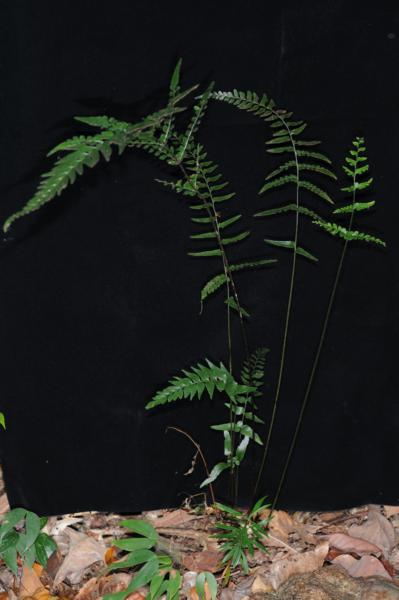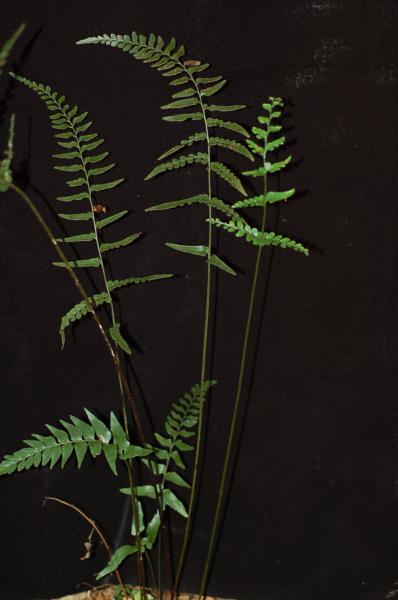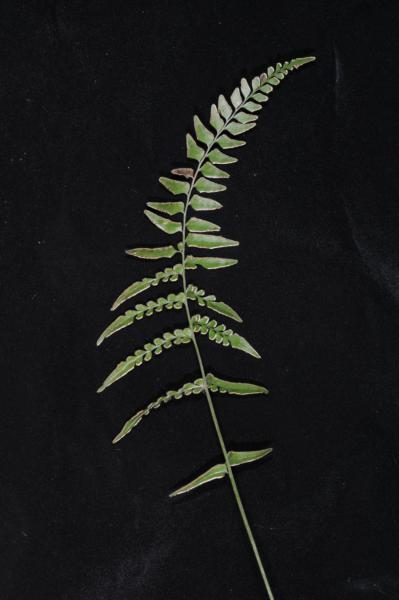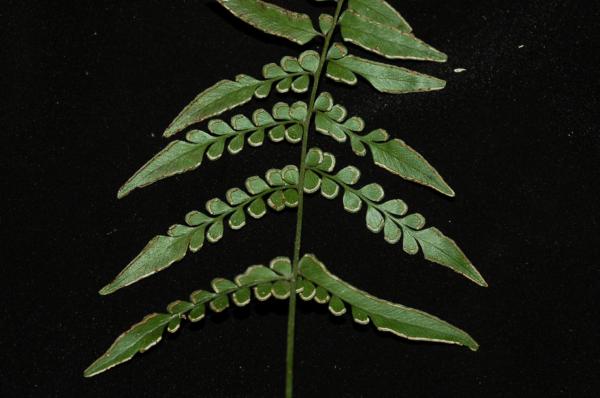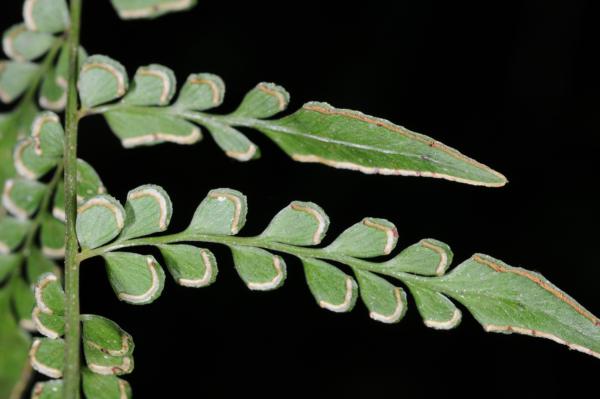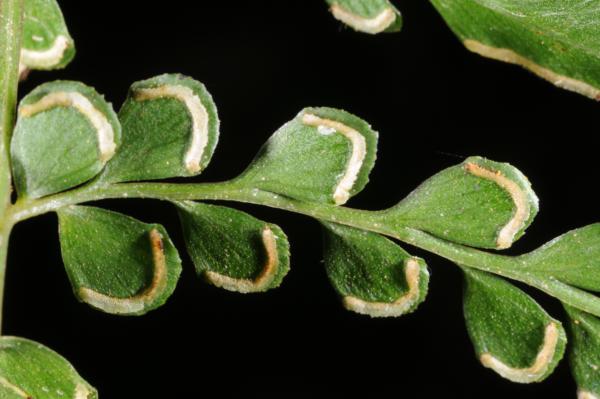
Lindsaea heterophylla Dryand.
Family
Lindsaeaceae
Nomenclature
Lindsaea heterophylla Dryand., Trans. Linn. Soc. 3: 41, pl. 8 f. 1. 1797; Bedd., Handb. Ferns Brit. India: 77. 1883; Christ, Bot. Tidsskr. 24: 110. 1901; Tagawa & K.Iwats., SouthE. Asian Stud. 5: 75. 1967; Kramer, Fl. Males., Ser. II, Pterid. 1: 210, f. 17 & 18. 1971; Kramer, Gard. Bull. Singapore 26: 31. 1972; Tagawa & K.Iwats., Fl. Thailand 3: 132. 1985; Boonkerd & Pollawatn, Pterid. Thailand: 92. 2000. – Schizoloma heterophyllum (Dryand.) J.Sm., J. Bot. 3: 414. 1841; Bedd., Handb. Ferns Brit. India: 80. 1883; C.Chr., Bot. Tidsskr. 32: 345. 1916; Holttum, Rev. Fl. Malaya ed. 1, 2: 345. 1955 [‘1954’]; Ching, Fl. Reipubl. Popularis Sin. 2: 273. pl. 23, f. 7–11. 1959.
Description
Rhizome short creeping, bearing fronds close together, about 5 mm diam., densely scaly at apex; scales linear, up to 2.5 mm in length, 2–3 cells broad at base, brown, more or less bright. Stipes brown to purplish, paler above, scaly at base, grooved on upper surface, round beneath, up to 30 cm long. Laminae simply pinnate to bipinnate, up to 25 by 20 cm; lower pinnae pinnate, linear-subtriangular to narrowly subdeltoid, stalked; upper pinnae simple, subsessile, linear-lanceolate with entire margin, acuminate at apex, cuneate to subtruncate at base; pinnules larger ones like the upper pinnae; smaller ones fan-shaped or ovate, entire, all herbaceous, green; veins anastomosing to form a row of areoles at each side of costa, otherwise free except for those united by sori. Sori continuous, not interrupted; indusia firm, hardly reaching the margin of pinnae or pinnules.
Distribution in Thailand
NORTHERN: Chiang Mai; NORTH-EASTERN: Loei; SOUTH-EASTERN: Trat; PENINSULAR: Surat Thani.
Wider Distribution
Madagascar, S India, Sri Lanka, Indochina, S China, W and N Central Malesia, north to the Ryukyus.
Ecology
On rather dry slopes in evergreen forests, not in open areas, at various altitudes: from sea level to about 1200 m.
Proposed IUCN Conservation Assessment
Least Concern (LC). This species is common and widespread and not under any known threat.
Notes
This species is variable in pinnation, size and form of plants and in texture. In light shade the plants become smaller with small pinnae, less divided and rather thick in texture, venation is rarely anastomosing in such small plants.
Voucher specimens - Thailand
Middleton et al. 4598, Trat, Ko Chang, Thanmagon Waterfall (E).
Habit (with black backcloth)
Fronds
Lamina
Basal pinnae
Pinnae
Fertile pinnules
Site hosted by the Royal Botanic Garden Edinburgh. Content managed by Stuart Lindsay, Gardens by the Bay, Singapore and David Middleton, Singapore Botanic Gardens. Last updated 24 January 2012
